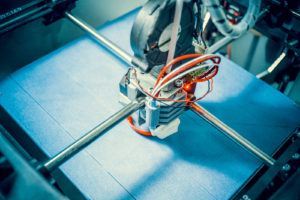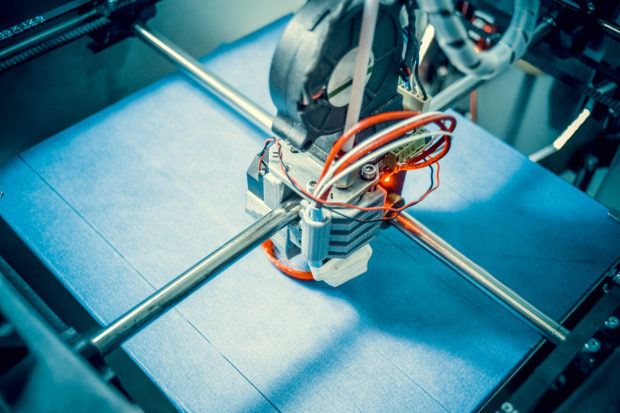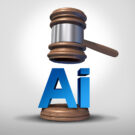For any property/casualty insurers out there wondering whether to cover exposures from 3-D printing, you probably already are, according to Bob Weireter, senior underwriter of casualty treaty business for Swiss Re.
Executive Summary
If an end user modifies a design, who has the design exposure, and how is any resulting liability apportioned? These are just some of the liability questions that will arise as 3-D and 4-D printing methods transform manufacturing, construction, medicine and other industries, a Swiss Re underwriter said at a recent industry conference.“3-D printing has moved beyond being a promising technology to being a major technology,” he said in his presentation at the 2017 Ratemaking and Product Management Workshop of the Casualty Actuarial Society, March 28 in San Diego. “It has now reached a certain degree of commercial application and commercial acceptance,” he said, “and some of you are already covering 3-D printing in your portfolios.”
According to Weireter, more than 12,000 3-D printing units valued at $5,000 or more have been sold in the U.S. While most people have only seen 3-D printers produce plastic toys and trinkets, they have evolved to produce complex products from ceramics, metals and other substances—including living, organic tissue created as human medical implants.
Among the recent displays of 3-D printing capabilities are cars manufactured principally of printed parts by California-based Local Motors, as well as the construction in 17 days of a multistory office in Dubai from printed building components.
As Weireter explained it, 3-D printing is an “additive process,” wherein layers of material are laid down to create different objects. This contrasts with traditional manufacturing that creates objects by “subtracting” them from larger amounts of material through cutting or molding.
That contrast points to two of the transformative effects of 3-D printing: reductions in needed supplies of materials and reductions in waste.
Other impacts include shorter product development cycles, more refined customization of end products and a vast reduction—if not elimination—of the need for complex supply chains.
4-D Printing
Still, there are challenges 3-D printing has to overcome before it becomes a pervasive application.
To achieve economies of scale in development and become cost effective for most enterprises, Weireter said, 3-D printing needs to increase the speed at which it can produce items and master the ability to produce items with multiple components.
Nonetheless, he said, the 3-D industry has advanced to the introduction of 4-D printing, with the fourth dimension of production being time—i.e., a component’s ability to change over time.
- 4D printing: just add water (Nov. 2, 2015)
- The future of 3-D printing sees 4-D printed objects that transform over time (Oct. 19, 2015)
- 3-D printing: Changing the world one print at a time (Oct. 20, 2015)
- Skylar Tibbits: The emergence of ‘4D printing’ (February 2013)
Weireter explained that 4-D printing can create objects constituted at the molecular or “nano” level to adapt to changes in conditions.
As examples, he stated that a 4-D pipe can be designed and created to expand or contract in response to changes in water pressure. Similarly, “printed” bricks can be designed to shift building stress under different conditions.
4-D printing can even produce medical implants that will change their shape and positioning as a person’s body changes over time.
As stated above, 3-D printing could dramatically shrink or eliminate inventories and supply chains, as outlets will be able to produce products on demand from small, compact supplies of bulk materials. “There’s no inventory and there’s no cost to transport the material,” Weireter said. “For customers, it’s what you want, when you want it, where you want it.”
Taking the concept to the next level, Weireter said that Amazon recently received patents for vehicles that will include mobile 3-D printers. The vehicles will allow the distribution giant to fulfill orders almost immediately. Orders will be communicated to delivery vehicles already on the road, and products can be printed as the vehicles are routed to newly added delivery destinations.

Products Liability
While exhilarating to contemplate, 3-D printing raises a host of product liability concerns as manufacturing is introduced into more and more enterprises.
For example, Weireter said, now that pharmacies can “print” the compounds they need to develop certain drugs, do they become pharmaceutical risks? What if 3-D printing applications allow physicians to produce medications in their offices, or individuals in their homes?
These are examples of potentially severe exposures requiring careful underwriting and rating consideration, Weireter said. Even a hobbyist’s printing of simple toys can create liability if parts break off and are swallowed by a child.
As Weireter explained it, 3-D printing blends and disperses the three principal functions of manufacturing and the resulting liability: design, manufacturing and warnings.
If an end user modifies a design, who has the design exposure, and how is any resulting liability apportioned? If the end product has a defect, how do you pinpoint the source of the error?
“Who is who in this chain of events?” Weireter asked. “In 3-D printing, a lot of people take on aspects of design and manufacturing.”
In a related sense, “traceability,” the ability to identify which process in which facility caused a product defect, becomes complicated and difficult with 3-D printing. “Today, you can go back to facilities, find the problem and fix it,” he said. “With 3-D printing, where do you go?
“It creates a gray area between CGL and professional liability.”





















 Despite Break in Car Prices, Soaring Insurance Costs Hit U.S. Buyers
Despite Break in Car Prices, Soaring Insurance Costs Hit U.S. Buyers  Viewpoint: Risks for D&O Insurers Exploring the New Frontier of Gen AI
Viewpoint: Risks for D&O Insurers Exploring the New Frontier of Gen AI  USAA to Lay Off 220 Employees
USAA to Lay Off 220 Employees  Travelers: Distracted Driving Incidents Continue to Rise
Travelers: Distracted Driving Incidents Continue to Rise 




